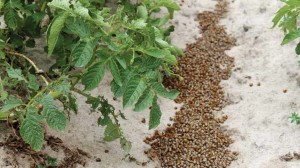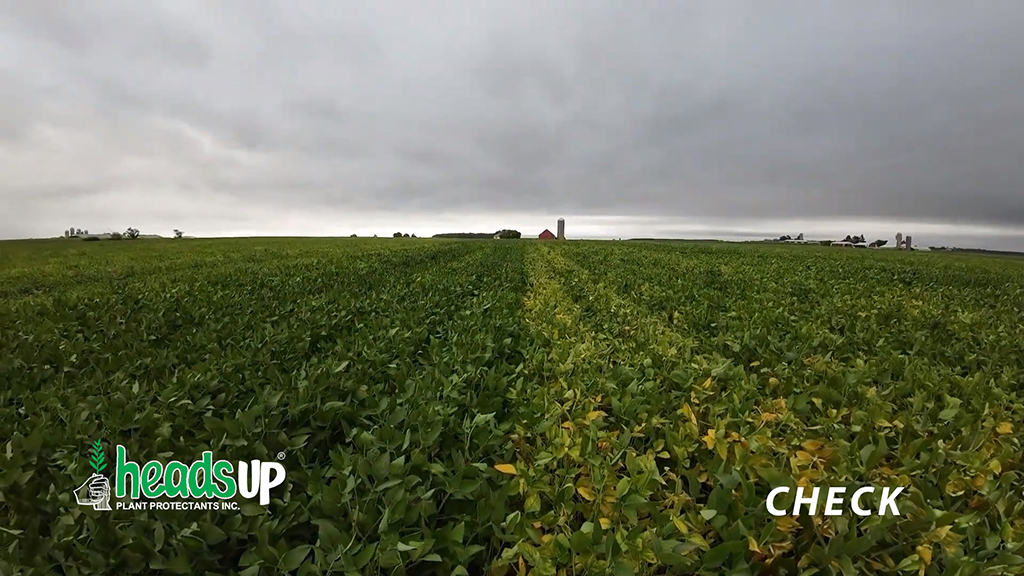BASF Is Betting On A Bright Agricultural Future
For attendees at the 2014 North American Agricultural Solutions Media Summit, held in Durham, NC, and hosted by BASF, the message was loud and clear: The German-based crop protection supplier foresees big things ahead for agriculture. “Agricultural innovation is the key to the future growth that BASF wants to achieve,” said Dr. Peter Eckes, president, BASF Plant Science, during the meeting’s opening session.
To accomplish this, BASF has been looking at several different areas for growth in recent years — what the company refers to as “pillars.” This includes working with The Monsanto Co. on Genuity DroughtGard hybrids, developing new cropping system tied to herbicides to combat hard-to-control weeds and marketing new fungicides using the company’s Xemium technology for disease control. “Fungal diseases in crops cost an estimated one billion bushels of yield loss in corn each year,” added Eckes.
To pave the way to the future, BASF has announced plans to expand its production capacity for key herbicides such as the company’s dicamba formulation, Engenia. Over the next few years, BASF will invest more than $270 million at its Beaumont, TX, and Hannibal, MO, plants, with additional capacities coming on-line during the 2016-17 seasons.
“The North American market has seen many challenges along with great opportunities in the past few years,” said Markus Heldt, president of BASF’s Crop Protection Division. “We are committed to investing in research & development, production and personnel in North America so that we can deliver effective and efficient solutions for growers and our retail customers.”
In addition, BASF is also targeting the global crop protection market as well. In June, the company announced it had signed an exclusive global development and license agreement with Mitsui Chemicals Agro Inc. (MCAG) of Tokyo, Japan, for a new insecticide codenamed MCI-8007. Under terms of the agreement, MCAG has granted BASF a worldwide exclusive license to commercialize the new product, except in Japan and certain other countries.
According to BASF, MCI-8007 features a new mode of action and is intended as an insecticide for use with leafy vegetables, fruiting vegetables, soybeans, cotton, corn and rice. It can control such pests as caterpillars, beetles, termites, ants and flies. “This new, highly-effective active ingredient enhances BASF’s insecticide pipeline, providing complementary chemistry to our current and future solutions,” said Heldt.
In terms of market timing, Heldt said BASF and MCAG plan to conduct more research on MCI-8007 over the next few years, with the first registration submission being presented in Japan in 2016. Other country registrations should follow in 2017.
Heldt added that BASF has significantly increased its spending on R&D for new products to approximately $2 million per day. “We are trying to move from a technology-driven mind-set as a company to more of a solutions-driven one,” he said.
Pressing Agricultural Problems
Following its general session, the BASF Media Summit next split up to visit various outdoor stations, each highlighting a different BASF product or division. Naturally, one of these stops looked at the problem of herbicide-resistant weeds. According to Luke Bozeman, technical marketing manager, herbicide-resistant weeds have been around for decades. However, since the discovery of glyphosate-resistant marestail in Delaware in 2001, the number and range of these weeds has rapidly expanded across much of the U.S. This has significantly impacted the use of glyphosate-resistant crops in the process.
“Palmer amaranth is one of the worst weeds out there right now, especially for growers in the South,” said Bozeman. “In fact, the problem has gotten so bad in recent years that it is literally changing the ways growers grow crops such as soybeans and cotton.”
But help is reportedly on the way. For the past few years, a number of companies have been developing crops that have resistance to older crop protection products such as 2,4-D and dicamba. This will allow growers to use different modes of action to hopefully control ones that currently resist glyphosate applications. If market watchers are correct, some of these might begin to receive their registration approvals in late 2014 or early 2015, with plantings taking place in spring 2015.
To do its part in this effort, BASF plans to market its own dicamba formulation under the Engenia brand name. According to Bozeman, Engenia is a broadspectrum herbicide that can be used to control 190 broadleaf weeds, including Palmer amaranth, waterhemp, marestail, velvetleaf, morningglory and ragweed. “Engenia is a new formulation that reduces the volatility of older dicamba formulations,” he said. “Customers should be able to use it to help control hard-to-control weeds in both cotton and soybean fields.”
Of course, resistant weeds aren’t only a problem with row crop growers. In recent years, said Jason Kuhlemeier, technical market manager, rice growers have been dealing with their own set of troublesome weeds, with red rice and ALS-resistant grasses becoming particular problems.
To address this, BASF has used traditional breeding techniques to develop the Provisia Rice System. The new system is comprised of Provisia seed containing the Provisia trait. This allows growers to safely apply Provisia herbicide on their rice crops. “This new system will provide a different site of action, helping rice growers control ALS-resistant weeds,” said Kuhlemeier. “It was designed to be used as a companion to the Clearfield Production System for rice, allowing growers to rotate herbicide sites of action for controlling grass weeds, including weedy rice and red rice.” BASF anticipates registration for the Provisia Rice System to occur as early as 2016 in the U.S., with other countries following shortly thereafter.
Besides herbicide-oriented initiatives, BASF is also looking at the crop nutrition category. Sometime during 2015, the company may begin offering its new LIMUS product to the agricultural market. According to Dr. Juergen Huff, senior vice president and head of the Functional Crop Care Division, LIMUS is designed to increase the efficiency of soil-applied urea. “Using LIMUS can help improve how urea is taken in by a growing plant by keeping it from degrading so quickly,” said Huff.
According to Laura Vance, a U.S. crop biology representative for BASF, LIMUS is a nitrogen inhibitor. “It features an enzyme that will bind with urea and block a certain active site,” said Vance. “This effectively keeps the urea from breaking down as fast as it normally would.”
Insecticide Activity
Another area where BASF expects to see plenty of market opportunity is insecticides. According to Sarah Thompson, regional marketing representative, North America, the company is planning to spend more than $100 million on new insecticide R&D in near future. “Our goal is to provide tools across all markets for growers to use,” said Thompson. “Also, BASF’s acquisition of Becker-Underwood in 2012 gave our company access to lots of new insecticide opportunities and the chance to develop not only conventional products, but biological ones as well.”
In May, BASF received unconditional registration from the EPA for a new miticide. Called Nealta, this product features the active ingredient cyflumetofen and a unique site of action not found in other miticides currently on the market, Nealta is labeled for use in tree nuts such as almonds, grapes, strawberries, apples and pears. Besides offering residual action for 30 to 40 days, the miticide does not harm beneficial insects, said Doug Haller, product manager.
In addition to crops, BASF has also branded cyflumetofen for use in greenhouses, nurseries and on landscapes under the name Sultan. Plants that can have Sultan applied for mite control include hibiscus, butterfly bushes, roses, marigolds, gerbera daisy and chrysanthemum. “Sultan miticide offers growers a powerful, targeted and novel tool needed to control mites quickly as part of a chemical program, or when used with benefiscials as part of an IPM approach,” said Dr. Kathie Kalmowitz, market development specialist.
Another new insecticide coming from BASF is designed to control fruit flies. According to Robbie Upton, global strategic marketing, this new product combines an insecticide with an attraction system, allowing growers to apply it using a backpack sprayer and using less product in their orchards. “Growers can deliver a small targeted application,” said Upton. “The attraction will draw the insects to those spots and then the insecticide present can finish them off.” This product could be available in Europe as early as 2015, he added, with the U.S. market following “a few years later.”

BASF’s new chewing insect product has tested effectively against Colorado potato beetles.
Then there’s a new chewing insect product in the pipeline. According to Rebecca Willis, project engineer, this as yet unnamed insecticide can be used in corn, cotton, soybeans and potatoes. “It’s a new mode of action, a very good molecule that doesn’t need very much to do its job,” said Willis. “At our plot here in North Carolina, we tested it on potatoes to control Colorado potato beetles. When the beetles got to the plants treated with insecticide, one bit was all it took to knock them off the plant and eventually cause them to die.” To illustrate this point, Willis showed attendees a plot of treated potato plants that featured mounds of dead and dying Colorado potato beetles along side them.
If all goes according to schedule, she added, BASF will submit this new insecticide to EPA for registration in 2017.
Overall, Nevin McDougall, senior vice president, BASF Crop Protection, North America, said the company will do whatever it takes to maintain its current market edge and expand into new areas over the next couple of years. “Supporting our customers is our number one priority, and we continually collaborate with them to address the issues that matter most,” said McDougall. “That means helping growers and retail customers improve output, care of their natural resources and support their local communities.”






